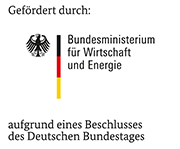16841 N

| Period: | 01.03.2012 - 30.09.2014 |
|---|---|
| Partner: | Prof. Dr. J. Rösler TU Braunschweig |
| Funder: | AiF |
| Project Manager: | Dr. Francesco Depentori |
| Research Group: | Corrosion |
Introduction
The metastable beta alloy TiMo15 is a promising alloy for biomedical implants. However, this alloy can suffer embrittlement due to the formation of ω-phase [1]. ω-phase formation can occur during machining processes like grinding and cutting, and requires only moderate temperatures of between 200 and 400 °C [2]. Additionally, temperatures below the β-transus temperature can cause the formation of α-phase. Since all these phases exhibit different chemical and mechanical properties, a detailed investigation of the formation processes and the behavior of different microstructures of TiMo15 with regard to machining and corrosion stability is required.
Project goals
The aim of the project is to determine the influence of drilling and cutting on the mechanical and corrosion properties. Therefore temperature evolution near drilling zones will be investigated and a detailed analysis of cross sections will be used to characterize the formation of ω- or α-phase during machining. Corrosion properties will be investigated by the analysis of heat treated and machined samples, mainly by electrochemical techniques. This will allow to determine the influence of single phases by varying the the type of electrolyte. Furthermore, microcell measurements will be used to compare different areas of heat influence due to machining. Finally, electrochemical AFM measurements will be carried out to investigate the influence of localized corrosion of single phases in different media.
First results
TiMo15 samples with a pure β microstructure (solution treated for 1 hour at 850 °C and then water quenched) have been electrochemically tested. Polarization curves have been recorded after 30 min, 60 min and 12 hours of exposure in 1,5 wt% NaCl, 1 M NaCl + 0.1 M Na2SO4, 2 M and 5 M HCl, 0.5M and 1M H2SO4 and fluoride containing sodium chloride solution (1000 ppm and 2000 ppm fluoride).
The tested alloys show a remarkably high corrosion resistance. In all media except those containing fluoride there is an immediate passivation visible and no active behavior, indicating only the growth of oxide inwards, as it is typical for titanium, being a valve metal. It has been shown that due to the addition of molybdenum the corrosion resistance increases strongly compared to grade 1 titanium [3]. In 1000 ppm fluoride there is an activity region visible due to the attack of the passive film, which is common for titanium alloys [4]. In 1000 ppm fluoride there is still a passivation at higher potentials, although accompanied by much higher passive current densities compared to e. g. H2SO4. Only for 2000 ppm fluoride the samples show an active corrosion behavior, e. g. no active-passive transition and reach high current densities of 500 µAcm-2 within a short polarization range (500 µAcm-2 is the set limit value for current density).
Future work
Future work will compare the results of pure β-microstructure with samples heat treated in the α-range (e. g. 700 °C, 8 hours) and with those artificially heat treated to produce ω-phase. On the multiphase materials localized corrosion measurements will be carried out as well, including microcell analysis and cyclic voltammetry.
Literature
[1] W. F. Ho, "Effect of Omega-Phase on Mechanical Properties of Ti-Mo Alloys for Biomedical Applications", Journal of Medical and Biological, 28, 1 (2008), 47 - 57
[2] B. Hickman, The Formation of Omega Phase in Titanium and Zirconium Alloys: A Review, Journal of Materials Science, Vol. 4 (1969), 554 - 563
[3] X. H. Min et al., "Effects of alpha phase precipitation on crevice corrosion and tensile strength in Ti-15Mo alloy", Materials Science and Engineering A, 527 (2010), 1480 - 1488
[4] N. Schiff et al. "Influence of Fluoride Content and pH on the Corrosion resistance of Titanium and its Alloys", Biomaterials. 23 (2002), 1995-2002.
back

Das IGF-Vorhaben Nr. 16841 N der Forschungsvereinigung DECHEMA e.V., Theodor-Heuss-Allee 25, 60486 Frankfurt am Main wurde über die AiF im Rahmen des Programms zur Förderung der industriellen Gemeinschaftsforschung (IGF) vom Bundesministerium für Wirtschaft und Energie aufgrund eines Beschlusses des Deutschen Bundestages gefördert.
Contact |
| Prof. Dr.-Ing. Wolfram Fürbeth |
| Tel.: 069 / 75 64-398 E-mail: fuerbeth |
Publications |
|
F. Depentori, J. Laukart, F. Brunke, S. Benfer, C. Siemers and W. Fürbeth |